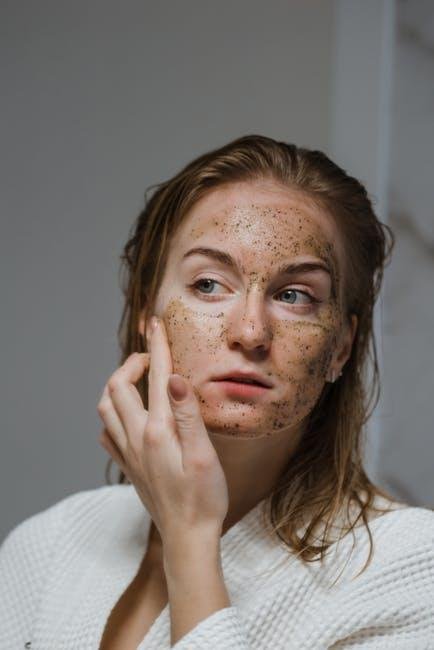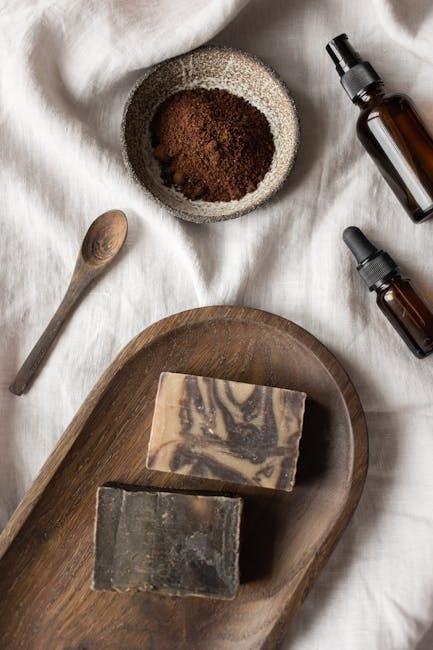In a world increasingly captivated by the allure of natural beauty and holistic wellness, the practice of DIY skincare has surged into the limelight, touted as a creative avenue for self-expression and personalized care. From kitchen concoctions to carefully curated rituals, individuals are diving into the art of crafting their own serums, scrubs, and masks, driven by a desire for transparency and authenticity in their skincare regimes. Yet, amid the fragrant allure of fresh ingredients and the charm of homemade formulations, questions arise: Is DIY skincare truly a safe and effective option to store-bought products? In this article, we will explore the intricate tapestry of DIY skincare, examining its advantages and potential pitfalls, while guiding you through the science, safety, and efficacy that lie beneath the enticing surface of homemade beauty solutions. Join us as we navigate this multifaceted landscape, empowering you to make informed decisions about what touches your skin.
Exploring the Science Behind DIY Skincare Formulations
DIY skincare formulations have gained immense popularity, driven by a desire for personalized beauty solutions and a growing skepticism about commercial products. at the heart of this movement lies a captivating interplay of chemistry,biology,and botany.Each ingredient, whether it be honey, aloe vera, or essential oils, carries its own unique properties that can interact in complex ways. Understanding how these components work together—not only on a chemical level but also in relation to skin biology—can help enthusiasts craft effective and safe formulations tailored to individual needs. Here are a few fundamental principles to consider:
- pH Balance: Maintaining the skin’s natural pH level is crucial for barrier function.
- Concentration: Certain active ingredients require specific concentrations to be effective and safe.
- Allergies and Sensitivities: Knowing your own skin type and its reactions to certain components is essential.
Moreover, while the allure of natural ingredients might suggest they are inherently safer, this isn’t always the case. For instance,herbal extracts can cause reactions just as synthetics can,highlighting the need for research and testing in DIY formulations. A useful tool for enthusiasts is the concept of compatibility, allowing for combinations that enhance efficacy without causing irritation.Below is a brief comparison of common ingredients and their potential effects:
| Ingredient | Potential Benefit | considerations |
|---|---|---|
| Aloe Vera | Moisturizing and soothing | May cause allergic reactions in some individuals |
| Tea tree Oil | Antibacterial and anti-inflammatory | Should be diluted to avoid skin irritation |
| Coconut Oil | Hydrating and antimicrobial | Can clog pores for some skin types |

Identifying Common Ingredients and Their Effects on the Skin
Understanding the role of various ingredients in DIY skincare can empower individuals to create personalized products that cater to their unique skin needs. A selection of common ingredients and their effects includes:
- Aloe Vera: Known for its soothing properties, it hydrates and calms inflamed skin.
- Coconut Oil: A natural moisturizer that can help with dry skin but may clog pores for some.
- Honey: With its antibacterial properties, it not only moisturizes but also helps to reduce acne.
- Essential Oils: Used for their fragrance and therapeutic benefits, though they can be irritating if not properly diluted.
- Shea Butter: An emollient that assists in locking moisture and repairing the skin barrier.
Another critical factor to consider is the potential for allergens and irritants found in some DIY ingredients. A brief overview of some common allergens includes:
| Ingredient | Allergenic Potential |
|---|---|
| Fragrance Oils | High potential for irritation and allergic reactions. |
| Tea Tree Oil | Can cause redness or dryness in sensitive skin types. |
| alcohol | May strip skin of natural oils, causing dryness. |

Safety Precautions for Home-Made Beauty Products
Creating your own beauty products can be a rewarding experiance, but it’s essential to prioritize safety to avoid adverse reactions. First and foremost,always perform a patch test before applying any new product to your skin. This involves applying a small amount of the formulation to a discreet area and waiting 24 hours to check for any allergic reactions. Additionally, use clean equipment and containers to minimize the risk of contamination. Ensure that your workspace is sanitized, and consider using glass or high-quality plastic containers that can withstand various ingredients.
Moreover, it is vital to source fresh, high-quality ingredients. Expired or low-quality components can compromise your formulations and lead to skin irritations or infections. When selecting oils, waxes, and other additives, consider documenting their shelf life and storage requirements. below is a rapid reference table of some common DIY ingredients and their recommended storage conditions:
| Ingredient | Shelf Life | Storage Conditions |
|---|---|---|
| Jojoba Oil | 1-2 years | Cool, dark place |
| Coconut Oil | 2-3 years | Room temperature |
| Essential Oils | 1-3 years | Cool, dark place |
| Aloe Vera Gel | 6 months | Refrigerate after opening |

Expert Recommendations for Effective DIY Skincare Practices
When embarking on your DIY skincare journey, it’s essential to understand the value of quality ingredients. Experts reccommend using natural components that are both gentle and effective for your skin type. Some favored ingredients include:
- Aloe Vera – Known for its soothing properties and hydration capabilities.
- Coconut Oil – A moisturizing agent that also has antibacterial effects.
- Honey – Beneficial for its antimicrobial properties and ability to seal in moisture.
- Essential Oils – Such as lavender or tea tree oil, which can provide various therapeutic benefits.
In addition to selecting the right ingredients, it’s crucial to follow safe DIY practices. Always perform a patch test before applying any new mixture to your face to avoid allergic reactions. Consider these tips:
| Practice | Description |
|---|---|
| Cleanliness | Ensure all tools and surfaces are sanitized before use. |
| Storage | Keep mixtures in airtight containers and store them in a cool, dry place. |
| Expiration | Use fresh ingredients and discard any mixtures that show signs of spoilage. |
Final Thoughts
the journey into the world of DIY skincare is as layered as the ingredients one might choose for a homemade mask. While the allure of natural remedies and the satisfaction of crafting your own products can be appealing, it’s essential to navigate this landscape with caution and informed decision-making. Awareness and education are your best allies; understanding your skin type,conducting patch tests,and consulting with skincare professionals are crucial steps in ensuring safety and effectiveness. Ultimately, whether you embrace the DIY approach or opt for commercially available products, the goal remains the same: nurturing your skin healthily and sustainably. As you explore the vibrant realm of skincare, remember that each ingredient and technique should serve you, not overwhelm you. Happy crafting, and may your skincare journey be as radiant as the glow you seek!

